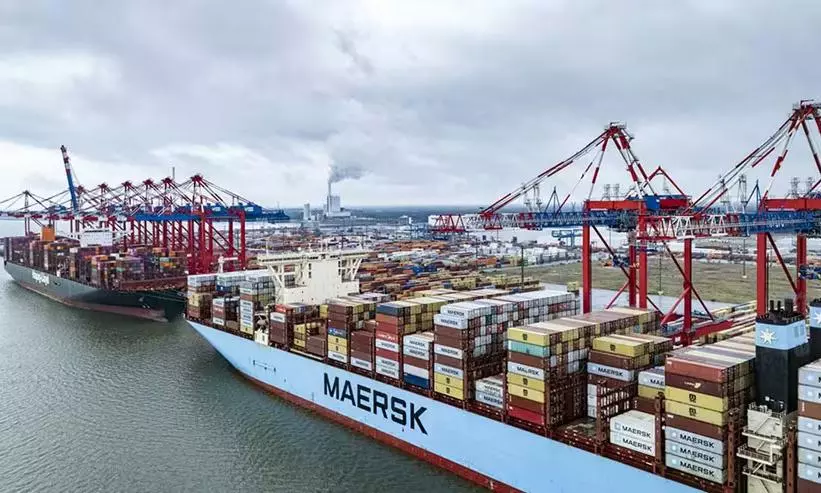Maersk EBITDA down by 44% in Q3; revenue stood at at $14,206 mn
Maersk now projects full-year underlying EBITDA to be between $9 billion and $9.5 billion

Maersk, the Danish shipping and logistics giant, reported preliminary underlying earnings before interest, tax, depreciation and amortisation (EBITDA) of $2,686 million for the third quarter of 2025. This figure represents a sharp 44% decline compared to the $4,797 million reported in the same period last year, a drop largely attributed to retreating freight rates from the peak cycle levels of 2024.
Despite the significant year-on-year drop in EBITDA, the company exceeded analyst expectations and raised the lower end of its full-year operating profit forecast. Maersk now projects full-year underlying EBITDA to be between $9 billion and $9.5 billion, up from the previous guidance of $8 billion to $9.5 billion.
Consolidated revenue for the quarter stood at $14,206 million, a 9% decrease from the previous year's $15,762 million.
Vincent Clerc, CEO at Maersk said, “We have delivered a strong third quarter across our business. Our performance reflects our ability to execute and continuously improve, as well as the trust customers place in us.
Logistics & Services continued its sequential improvement, with profitability rising to an EBIT margin of 5.5%, up from 4.8% in the previous quarter. This was driven by cost control and strong performance in the Fulfilled by Maersk segment, particularly in Warehousing. The segment's EBIT grew 24% to $218 million compared to $175 million in Q3 2024.
Terminals delivered a record quarter, with momentum continuing across volumes, revenue, EBITDA, and EBIT. Volumes grew by 8.7%, driven by strong demand across the Americas, Europe, and Africa, with asset utilisation at a high 89%.
Clerc further said, “The new East-West network has strengthened our Ocean performance, delivering industry-leading reliability, higher volumes and lower costs. As market conditions fluctuate, we are well positioned to help our customers adapt and maintain stability across their supply chains.”
The company’s ability to manage costs and drive efficiency in its non-Ocean segments was key to supporting the raised full-year guidance despite the challenging freight rate environment in its core shipping business.



